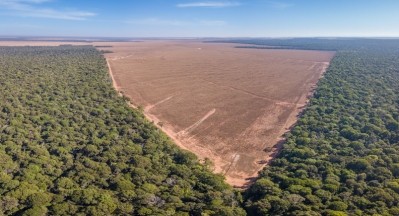How should the EU go about its risk benchmarking of sourcing regions for soy, cocoa, palm oil and other commodities?

The EU’s deforestation regulation (EUDR) came into force on June 29. By the end of 2024, the EU Commission must classify all producer countries or regions within them as either low, standard, or high risk.
Building trust
Engagement with governments and other stakeholders in producer countries on the design of the risk benchmarking system will be critical in building trust in the system, said Trase and Proforest. Their new policy briefing sets out recommendations for an “objective and data-driven” framework.
A partnership approach is particularly important when acting in high-risk areas of deforestation through governance reforms, including support for compliance, with a focus on smallholders, and incentives for the transition to more sustainable production, according to those bodies.
“Designing a fair and effective risk benchmarking system is no small undertaking. It needs to cover a variety of commodities including beef, cocoa, palm oil, soy and wood produced in a range of countries from Brazil and Indonesia to Sweden and Côte d'Ivoire. Existing global datasets on deforestation are often patchy, relying on crude estimates of the impact of commodity expansion.”
Trase and Proforest said thier recommendations draw on experience designing a risk benchmarking system in partnership with the Consumer Goods Forum's Forest Positive Coalition (CGF-FPC) to support its member companies to implement their voluntary zero-deforestation commitments. A key insight from its research, said Trase, is that commodity deforestation is often concentrated in a handful of countries and regional hotspots.
“Moreover, different commodities can have different levels of deforestation risk in the same country. Trase and Proforest recommend that the EU should make full use of subnational risk benchmarking – not just for high-risk countries – but for any country with a large variation in regional deforestation rates. Risk benchmarking should also be done on a commodity-specific basis where sufficient data is available.”
Filling the data gaps
The two organizations identified the need to invest in generating better data to support risk benchmarking including improving and maintaining up to date, globally consistent datasets on commodity deforestation.
“Subnational risk benchmarking requires more granular data that may require access to country or region-specific information. Trase and Proforest’s approach to risk benchmarking demonstrates that it is possible to overcome data gaps by integrating different datasets and safeguards, but this increases complexity. Filling the data gaps is therefore a critical priority.”
It is also important to integrate data on legal compliance and human rights into the risk benchmarking system, they noted.











